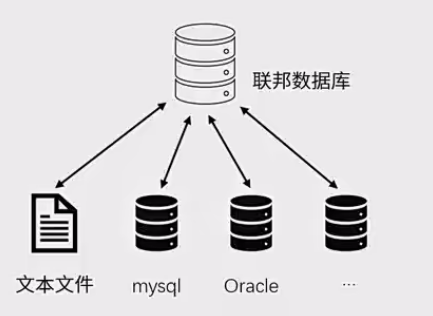前置
本篇是平衡树-treap的补充学习笔记。
Treap- 树堆
学习基础:适合一定基础的:比如,实现了经典二叉搜索树(常用的几个函数写过), 和二叉堆(数组的上浮下沉会写吗?),至少了解旋转的概念且写过旋转的接口(有一定理解,比如实现AVL树/红黑树)(涉及到相关思想)。
实现语言:Java。 —其它语言的小伙伴可拷贝我的代码转译成自己的语言(笔者虽然多语言学习,但使用侧重点不同, 对语言的理解也浅薄, 频繁切换语言不妥。)
纯根据理解手写。
来源:算法导论---红黑树章节后的treap思考题
参考书籍:算法导论
- 有关问题:
- 算法导论第6章堆排序详细地说明了:二叉堆概念, 上浮和下沉操作的相关概念伪代码。实现一下二叉堆(优先级队列)
- 算法导论第12章介绍了
transplant接口, 和二叉搜索树的其它好用的函数。 - 算法导论第13章介绍了红黑树, 红黑树的代码很难写且不易理解,只需了解一下旋转这个操作和伪代码即可。
- 可以去油管或者b站, 或者搜索引擎查找相关问题。
笔者水平有限, 本篇基于笔记改写, 缺点很多, 不太适合新手, 适合部分熟悉的朋友回顾复习, 在此见谅。
引入
- 对于一般的二叉搜索树, 已知n个数据序列插入到一个二叉搜索树有可能得到性能极差(高度极不平衡的二叉搜索树)。这种单支树的例子, 相信你已经不会陌生了。对于随机化构建的二叉搜索树, 经过概率论分析的数学期望, 得到的二叉搜索树是趋向平衡的。
之前写过一篇动态随机化的平衡树结构-----跳表, 非形式地讨论了这个问题。
接下来, 介绍另一种动态随机化的平衡树结构-----Treap。
为什么有了随机化构建, 而依旧有研究动态化构建的必要呢? 尽管在跳表篇给了解释, 但此篇为不甚了解的朋友作出非严格地说明。已知n个数据构建随机二叉搜索树, 当然可行。 缺点? 如果我们未知数据量n呢?或者随机化二叉搜索树,我们还要动态地插入删除呢?, 在只允许我们一次取一个数据的场景, 经典的随机化构建二叉搜索树不现实了。 我都拿不到所有数据,如何随机化地插入二叉搜索树呢? 相比
Treap和跳表动态树结构, 经典随机二叉搜索树可以说是静态结构。
介绍
Treap 是一种弱平衡的树结构, 什么叫做弱平衡呢? 不同平衡树对平衡的定义不同, 确切的,它们对平衡的宏观定义是相同的(维持一棵好性能的树), 但对树的平衡严格程度要求是不一样的。
一般地, 弱平衡树更好实现, 相比于强平衡的AVL(左右子树高度差不为1), 红黑树(左右高度差小于2倍), 跳表明显好实现多了。其次,强平衡树在高度上有最坏的保证(最坏也是性能比较好的),弱平衡树最坏保证是经典二叉搜索树的最坏情况(单支链表的情况)。
归咎原因, 弱平衡没有在高度上严格保证, 这里的Treap还把基本操作交给概率这一事物, 平均来看很好, 但失败的后果会很糟糕(虽然失败导致最坏的情况从概率数字来看几乎不可能发生)。
现在,我们可以正式地介绍一下Treap了,
在此,简单回顾一下:
对于二叉搜索树: 基本性质: 左子树的key <= 根 <= 右子树的key。
对于二叉堆:基本性质:孩子的key>=父亲的key(最小堆), 兄弟之间的大小关系不在意。
综合二者性质,依旧让key的关系满足: 左 < 根 < 右, 可以取等自己调整一下。但我个人风格是key最好互异。
堆的性质从何体现, 我们引入了一个priority字段,表示优先级。
类比二叉堆的最小堆, 那么最小Treap,满足parent.priority < node.priority
![![[Pasted image 20240927090041.png]]](https://i-blog.csdnimg.cn/direct/643fc2a2a3a44d529ab027df262e176f.png)
综合:
Treap 具有以下几个重要性质:
-
二叉搜索树性质:对于每个节点,其左子树的所有节点的键值小于该节点的键值,而右子树的所有节点的键值大于该节点的键值。假设键值是不一样的。
-
堆性质:每个节点的优先级大于或等于其子节点的优先级。这条性质导致这个结构和堆一致。
-
随机性:节点的优先级通常是随机生成器(如
Java中的Random对象)生成的,这使得Treap的结构在插入和删除操作中保持平均 O ( l o g n ) O(log n) O(logn) 的时间复杂度。 -
动态平衡性:支持随机化的动态插入,删除, 比随机化二叉搜索树自由。
实现
- 以下代码比较简单, 若你是学Java的应该不难读懂,其它语言的小伙伴可以借助
chatgpt翻译成自己的语言,这是一种我比较经典的写法了。
import java.util.Random;
import java.util.Comparator;
public class Treap<K,V> {
//比较器, 可以手动传递比较器对象, 否则K必须实现Comparable接口
private Comparator<? super K> comparator;
//随机数生成器, 为每一个节点生成一个随机数
private final Random random = new Random();
private Node<K,V> root; //根节点
public class Node<K,V>{
K key; //键
V value; //值
Node<K,V> left; //左子树
Node<K,V> right; //右子树
Node<K,V> parent; //父指针
int priority; //优先级
public Node(K key, V value) {
this.key = key;
this.value = value;
left = right = parent = null;
priority = random.nextInt();//为新生成的节点分配一个随机数。
}
}
public Treap(){
this(null);
}
public Treap(Comparator<? super K> comparator) {
this.comparator = comparator;
}
}
查询操作
![![[Pasted image 20240927090041.png]]](https://i-blog.csdnimg.cn/direct/643fc2a2a3a44d529ab027df262e176f.png)
查询操作, 方法思路同经典二叉搜索树, 在此不多赘述。
- 下面实现了三个方法, 核心关注
search方法,contains返回一个布尔值,判断关键字key的节点是否存在。get方法根据键获取值。
public Node<K,V> search(K key){
if(root == null){
return null; //这里单独检查一下。
}
Node<K,V> current = root;//遍历Treap
int cmp = 0; //记录比较结果
if(comparator != null){
//比较器不为空,那么优先使用比较器。
while(current!=null){
cmp = comparator.compare(current.key, key);
if(cmp==0){
return current;//找到了!直接返回节点的引用。
}
else if(cmp<0){
//当前值太小了, 前往右子树
current = current.right;
}
else{
//cmp>0
current = current.left;
}
}
}
else{
//comparator == null
@SuppressWarnings("unchecked!")
Comparable<? super K> comparable = (Comparable<? super K>)current.key;
// 使用者必须确保K类型是可比较的, 否则报错。
cmp = comparable.compareTo(key);
while(current != null){
comparable = (Comparable<? super K>)current.key;
cmp = comparable.compareTo(key);
//逻辑与比较器相同
if(cmp==0){
return current;
}
else if(cmp<0){
current = current.right;
}
else{
current = current.left;
}
}
}
return null;//出循环了即为空。
}
//根据serach结果造contains函数和get函数
public boolean contains(K key){
return search(key) != null;
}
public V get(K key){
return search(key) != null ? search(key).value : null;
}
插入操作
写法很简单, 套路更简单。
经典BST插入+二叉堆的上浮调整。
TREAP-INSERT(T, x):
y <- T.root
p <- NIL
while y ≠ NIL:
p <- y
if y.key == x.key:
// Update the value
y.val <- x.val
return
elseif y.key > x.key:
y <- y.left
else: // y.key < x.key
y <- y.right
if p == NIL:
T.root <- x // Insert as root if tree was empty
elseif p.left == y:
p.left <- x
else:
p.right <- x
siftUp(T, x) // Perform the sift up operation
这张图举例:
BST操作不多说, 下面来说明指针版本的上浮操作处理, 旋转又来了。
可能数组的堆上浮写熟悉了, 头一次处理指针版本的。
![![[Pasted image 20240927122757.png]]](https://i-blog.csdnimg.cn/direct/91e2cac34eda4ec5b839b608eb1b006d.png)
public void put(K key, V value){
if(key != null) {
insert(new Node(key, value));
}
}
public void insert(K key, V value){
if(key != null) {
insert(new Node(key, value));
}
}
public void insert(Node<K,V> node) {
if (root == null) {
root = node; //这里单独处理, 保证后续代码在非空情形下
return;
}
Node<K,V> current = root; // 当前节点
Node<K,V> parent = null; // 父节点
int cmp = 0;
// 遍历查找插入位置
while (current != null) {
parent = current;
if (comparator != null) {
cmp = comparator.compare(node.key, current.key);
} else {
@SuppressWarnings("unchecked")
Comparable<? super K> comparable = (Comparable<? super K>) current.key;
cmp = comparable.compareTo(node.key);
}
if (cmp == 0) {
current.value = node.value; // 更新值
return;
} else if (cmp < 0) {
current = current.right; // 前往右子树
} else {
current = current.left; // 前往左子树
}
}
// 插入节点
node.parent = parent;
if (cmp < 0) {
parent.right = node; // 插入到右子树
} else {
parent.left = node; // 插入到左子树
}
siftUp(node); // 上浮操作
}
旋转接口
这里眼熟一下, 实现avl或者红黑树,简单回顾一下左旋和右旋两个接口。
private void leftRotate(Node<K,V> x) {
Node<K,V> y = x.right;
x.right = y.left;
if (y.left != null) {
y.left.parent = x;
}
y.parent = x.parent;
if (x.parent == null) {
root = y; // y 变为新的根节点
} else if (x == x.parent.left) {
x.parent.left = y; // x 是左子节点
} else {
x.parent.right = y; // x 是右子节点
}
y.left = x; // x 变为 y 的左子节点
x.parent = y; // 更新 x 的父指针
}
private void rightRotate(Node<K,V> y) {
Node<K,V> x = y.left;
y.left = x.right;
if (x.right != null) {
x.right.parent = y;
}
x.parent = y.parent;
if (y.parent == null) {
root = x; // x 变为新的根节点
} else if (y == y.parent.left) {
y.parent.left = x; // y 是左子节点
} else {
y.parent.right = x; // y 是右子节点
}
x.right = y; // y 变为 x 的右子节点
y.parent = x; // 更新 y 的父指针
}
siftUp
private void siftUp(Node<K, V> node){
//上浮的临界是根节点,到根节点就必须终止了。
//这里直接node.parent, 不需要申请新变量。---对可读性没多大英影响
while(node != root && node.priority < node.parent.priority){
//开始上浮
if(node.parent.left == node){
//执行右旋
rightRotate(node.parent);
}
else{
//parent.right == node
//执行左旋
leftRotate(node.parent);
}
//经过旋转后,原先的父亲节点指针parent成为node的孩子节点
node.parent = node.parent;
}
}
删除
以下两个接口函数, 你必须在BST中学明白了。
这两个方法在Treap的删除操作中非常重要。
transplant && minimum
transplant方法:用于替换树中一个节点u为另一个节点v,并更新它们的父节点关系。minimum方法:用于查找给定节点的最小值节点,通过遍历左子树实现。
private void transplant(Node<K,V> u, Node<K,V> v) {
if (u.parent == null) {
root = v; // u 是根节点
} else if (u == u.parent.left) {
u.parent.left = v; // u 是左子节点
} else {
u.parent.right = v; // u 是右子节点
}
if (v != null) {
v.parent = u.parent; // 更新 v 的父指针
}
}
public Node<K,V> minimum(Node<K,V> node) {
if (node == null) {
return null; // 如果节点为空,返回 null
}
while (node.left != null) {
node = node.left; // 一直遍历左子树,直到找到最小值
}
return node;
}
删除
public void delete(Node<K,V> node) {
if (node.left == null) {
transplant(node, node.right); // 只有右子树
} else if (node.right == null) {
transplant(node, node.left); // 只有左子树
} else {
// 找到右子树中的最小节点
Node<K,V> leftMin = minimum(node.right);
if (leftMin.parent != node) {
transplant(leftMin, leftMin.right);
leftMin.right = node.right;
if (leftMin.right != null) {
leftMin.right.parent = leftMin;
}
}
transplant(node, leftMin);
leftMin.left = node.left;
leftMin.left.parent = leftMin;
}
siftDown(node); // 维护 Treap 的性质
}
siftDown
private void siftDown(Node<K,V> node) {
Node<K,V> child = node.left;
boolean isLeft = true;//左孩子还是右孩子,
while (child != null) {
// 选择优先级较高的孩子节点
if (node.right != null && node.right.priority > child.priority) {
child = node.right;
isLeft = false;
}
// 执行旋转
if (child.priority > node.priority) {
if (isLeft) {
rightRotate(node);
} else {
leftRotate(node);
}
node = child; // 更新当前节点为孩子节点
child = (isLeft) ? node.left : node.right; // 继续下沉
isLeft = true; // 重置为左子树
} else {
break; // 如果当前节点的优先级已大于所有孩子,结束
}
}
}
其它问题思考
Treap的唯一性
给定一组关键字和优先级均互异的节点, 可以组成唯一的Treap树与这些节点关联。
第一步, 根的唯一性:根节点是具有最高优先级的节点, 由于每个键值的优先级是唯一的,所以具有最高优先级的节点也是唯一的。比如最小`Treap中,根节点是最小的priority。
第二步, 递归构建。 由于根节点唯一了, 那么可以分组,一组的节点的key均小于root.key, 另一组均大于root.key。那么左右两边的序列元素确定了。
第三步, 递归中子树遵循第一条, 因此结构必定唯一。 因为树是由递归定义的。
以上性质涉及,二叉搜索树的有序性, 堆的性质。总之, 可以证明满足上述条件的Treap具有唯一性。 证毕!
待补充。。。
由于其它问题,比如树的期望高度证明需要概率知识, 数学这一块依旧是硬伤。
在此就不献丑了, 留待日后补充。
总源码
关于Treap实现有多种方案。 比如,我的方案是旋转treap,可以参考treap。
有兴趣的小伙伴可以根据我的代码拓展很多功能, 在此篇就不写多了, 只能说本篇的可拓展性强吧
学艺不精, 难免错误, 希望并感谢大佬您提出宝贵的意见, 谢邀。
感谢我的朋友们的鼓励,和数学编程问题的指导, 这几天精神真是颓废, 今天好多了。
import java.util.Random;
import java.util.Comparator;
public class Treap<K,V> {
//比较器, 可以手动传递比较器对象, 否则K必须实现Comparable接口
private Comparator<? super K> comparator;
//随机数生成器, 为每一个节点生成一个随机数
private final Random random = new Random();
private Node<K,V> root; //根节点
public class Node<K,V>{
K key; //键
V value; //值
Node<K,V> left; //左子树
Node<K,V> right; //右子树
Node<K,V> parent; //父指针
int priority; //优先级
public Node(K key, V value) {
this.key = key;
this.value = value;
left = right = parent = null;
priority = random.nextInt();//为新生成的节点分配一个随机数。
}
}
public Treap(){
this(null);
}
public Treap(Comparator<? super K> comparator) {
this.comparator = comparator;
}
public Node<K,V> search(K key){
if(root == null){
return null; //这里单独检查一下。
}
Node<K,V> current = root;//遍历Treap
int cmp = 0; //记录比较结果
if(comparator != null){
//比较器不为空,那么优先使用比较器。
while(current!=null){
cmp = comparator.compare(current.key, key);
if(cmp==0){
return current;//找到了!直接返回节点的引用。
}
else if(cmp<0){
//当前值太小了, 前往右子树
current = current.right;
}
else{
//cmp>0
current = current.left;
}
}
}
else{
//comparator == null
@SuppressWarnings("unchecked!")
Comparable<? super K> comparable = (Comparable<? super K>)current.key;
// 使用者必须确保K类型是可比较的, 否则报错。
cmp = comparable.compareTo(key);
while(current != null){
comparable = (Comparable<? super K>)current.key;
cmp = comparable.compareTo(key);
//逻辑与比较器相同
if(cmp==0){
return current;
}
else if(cmp<0){
current = current.right;
}
else{
current = current.left;
}
}
}
return null;//出循环了即为空。
}
//根据serach结果造contains函数和get函数
public boolean contains(K key){
return search(key) != null;
}
public V get(K key){
return search(key) != null ? search(key).value : null;
}
public void put(K key, V value){
if(key != null) {
insert(new Node(key, value));
}
}
public void insert(K key, V value){
if(key != null) {
insert(new Node(key, value));
}
}
public void insert(Node<K,V> node) {
if (root == null) {
root = node; //这里单独处理, 保证后续代码在非空情形下
return;
}
Node<K,V> current = root; // 当前节点
Node<K,V> parent = null; // 父节点
int cmp = 0;
// 遍历查找插入位置
while (current != null) {
parent = current;
if (comparator != null) {
cmp = comparator.compare(node.key, current.key);
} else {
@SuppressWarnings("unchecked")
Comparable<? super K> comparable = (Comparable<? super K>) current.key;
cmp = comparable.compareTo(node.key);
}
if (cmp == 0) {
current.value = node.value; // 更新值
return;
} else if (cmp < 0) {
current = current.right; // 前往右子树
} else {
current = current.left; // 前往左子树
}
}
// 插入节点
node.parent = parent;
if (cmp < 0) {
parent.right = node; // 插入到右子树
} else {
parent.left = node; // 插入到左子树
}
siftUp(node); // 上浮操作
}
private void leftRotate(Node<K,V> x) {
Node<K,V> y = x.right;
x.right = y.left;
if (y.left != null) {
y.left.parent = x;
}
y.parent = x.parent;
if (x.parent == null) {
root = y; // y 变为新的根节点
} else if (x == x.parent.left) {
x.parent.left = y; // x 是左子节点
} else {
x.parent.right = y; // x 是右子节点
}
y.left = x; // x 变为 y 的左子节点
x.parent = y; // 更新 x 的父指针
}
private void rightRotate(Node<K,V> y) {
Node<K,V> x = y.left;
y.left = x.right;
if (x.right != null) {
x.right.parent = y;
}
x.parent = y.parent;
if (y.parent == null) {
root = x; // x 变为新的根节点
} else if (y == y.parent.left) {
y.parent.left = x; // y 是左子节点
} else {
y.parent.right = x; // y 是右子节点
}
x.right = y; // y 变为 x 的右子节点
y.parent = x; // 更新 y 的父指针
}
private void siftUp(Node<K, V> node){
//上浮的临界是根节点,到根节点就必须终止了。
//这里直接node.parent, 不需要申请新变量。---对可读性没多大英影响
while(node != root && node.priority < node.parent.priority){
//开始上浮
if(node.parent.left == node){
//执行右旋
rightRotate(node.parent);
}
else{
//parent.right == node
//执行左旋
leftRotate(node.parent);
}
//经过旋转后,原先的父亲节点指针parent成为node的孩子节点
node.parent = node.parent;
}
}
private void transplant(Node<K,V> u, Node<K,V> v) {
if (u.parent == null) {
root = v; // u 是根节点
} else if (u == u.parent.left) {
u.parent.left = v; // u 是左子节点
} else {
u.parent.right = v; // u 是右子节点
}
if (v != null) {
v.parent = u.parent; // 更新 v 的父指针
}
}
public Node<K,V> minimum(Node<K,V> node) {
if (node == null) {
return null; // 如果节点为空,返回 null
}
while (node.left != null) {
node = node.left; // 一直遍历左子树,直到找到最小值
}
return node;
}
public void delete(Node<K,V> node) {
if (node.left == null) {
transplant(node, node.right); // 只有右子树
} else if (node.right == null) {
transplant(node, node.left); // 只有左子树
} else {
// 找到右子树中的最小节点
Node<K,V> leftMin = minimum(node.right);
if (leftMin.parent != node) {
transplant(leftMin, leftMin.right);
leftMin.right = node.right;
if (leftMin.right != null) {
leftMin.right.parent = leftMin;
}
}
transplant(node, leftMin);
leftMin.left = node.left;
leftMin.left.parent = leftMin;
}
siftDown(node); // 维护 Treap 的性质
}
private void siftDown(Node<K,V> node) {
Node<K,V> child = node.left;
boolean isLeft = true;//左孩子还是右孩子,
while (child != null) {
// 选择优先级较高的孩子节点
if (node.right != null && node.right.priority > child.priority) {
child = node.right;
isLeft = false;
}
// 执行旋转
if (child.priority > node.priority) {
if (isLeft) {
rightRotate(node);
} else {
leftRotate(node);
}
node = child; // 更新当前节点为孩子节点
child = (isLeft) ? node.left : node.right; // 继续下沉
isLeft = true; // 重置为左子树
} else {
break; // 如果当前节点的优先级已大于所有孩子,结束
}
}
}
}
红尘漩涡不由己, 何朝散发弄扁舟。
乘风破浪三万里, 方是我辈魔道人。
—20240927
— author:Autumn Whisper。



















